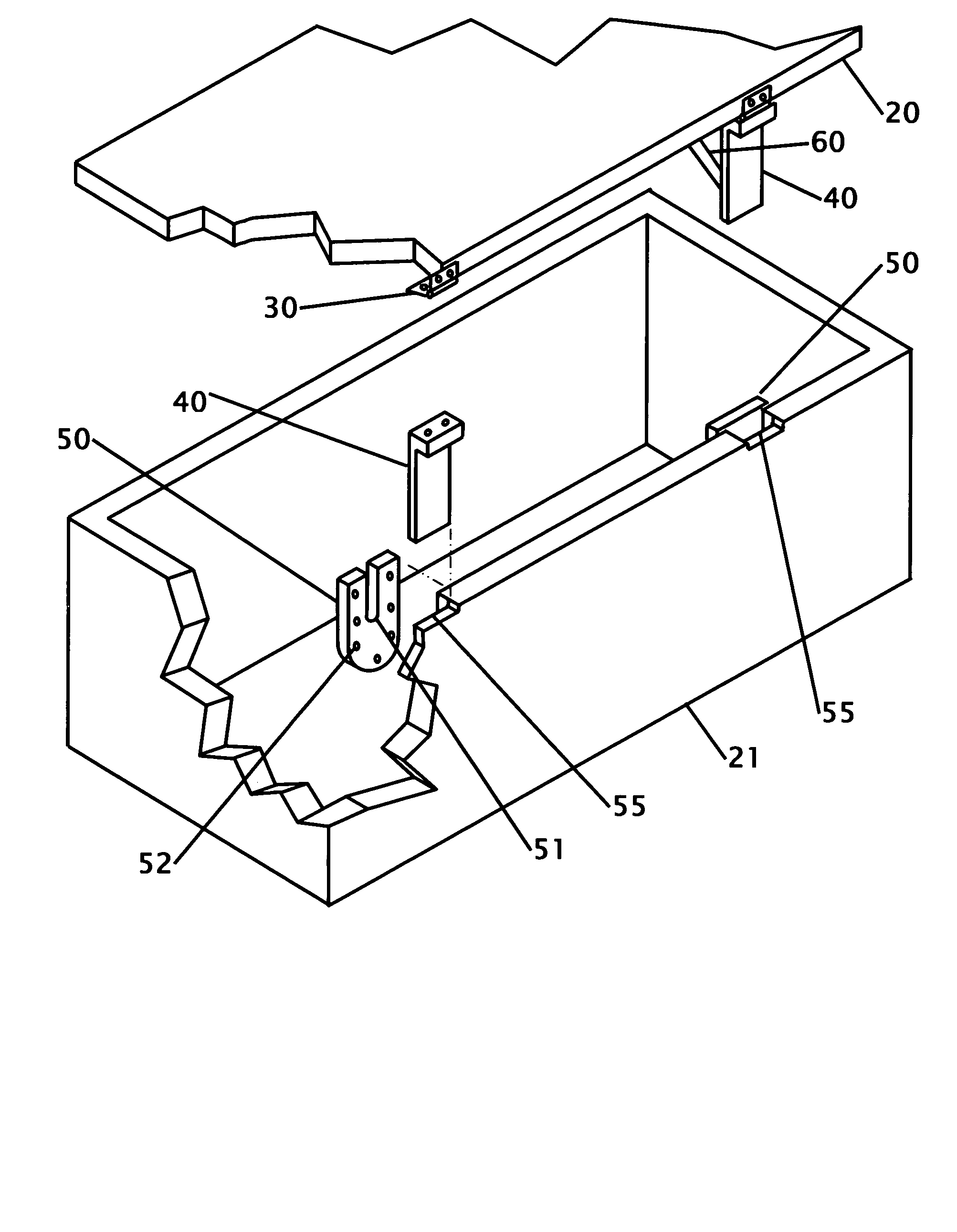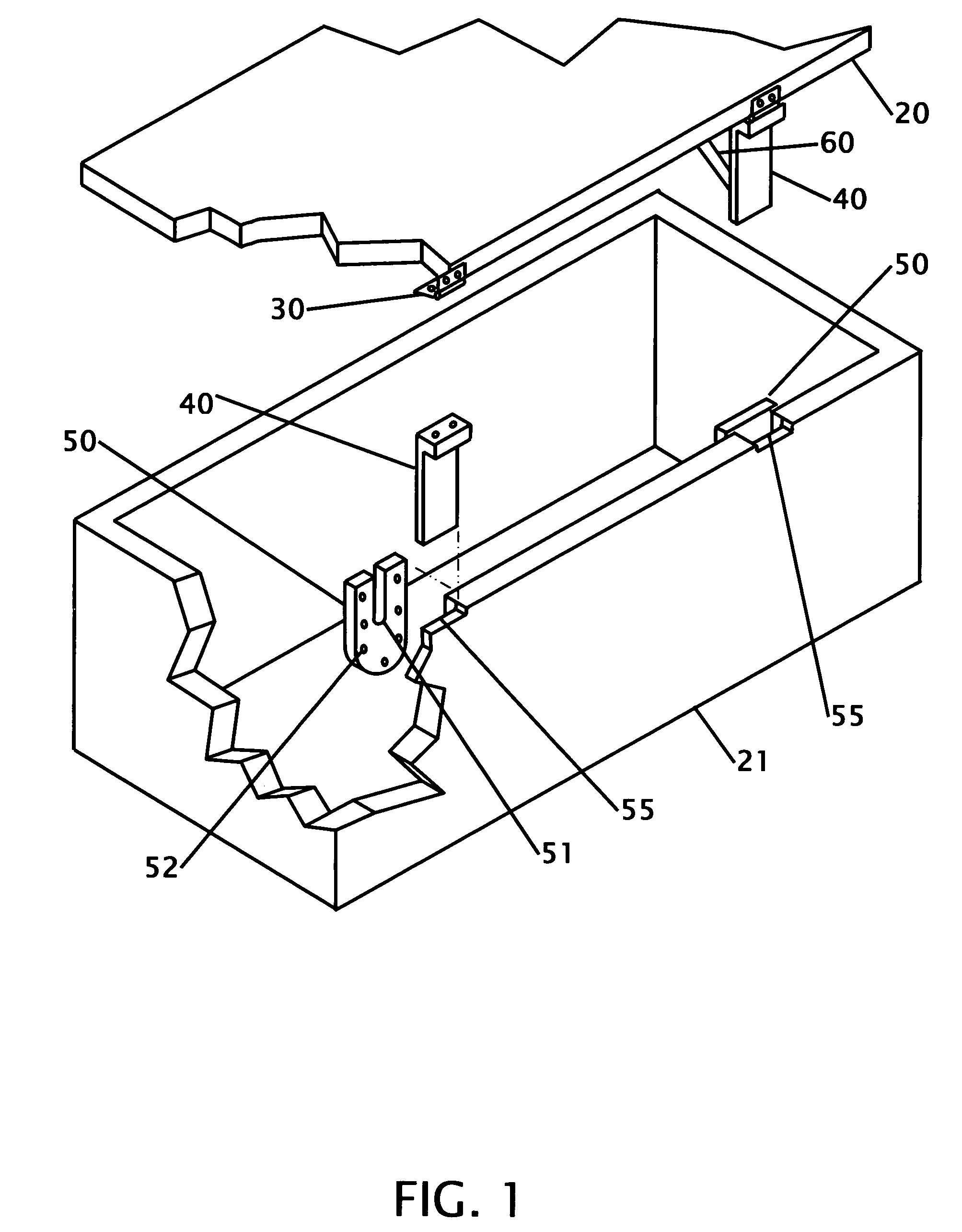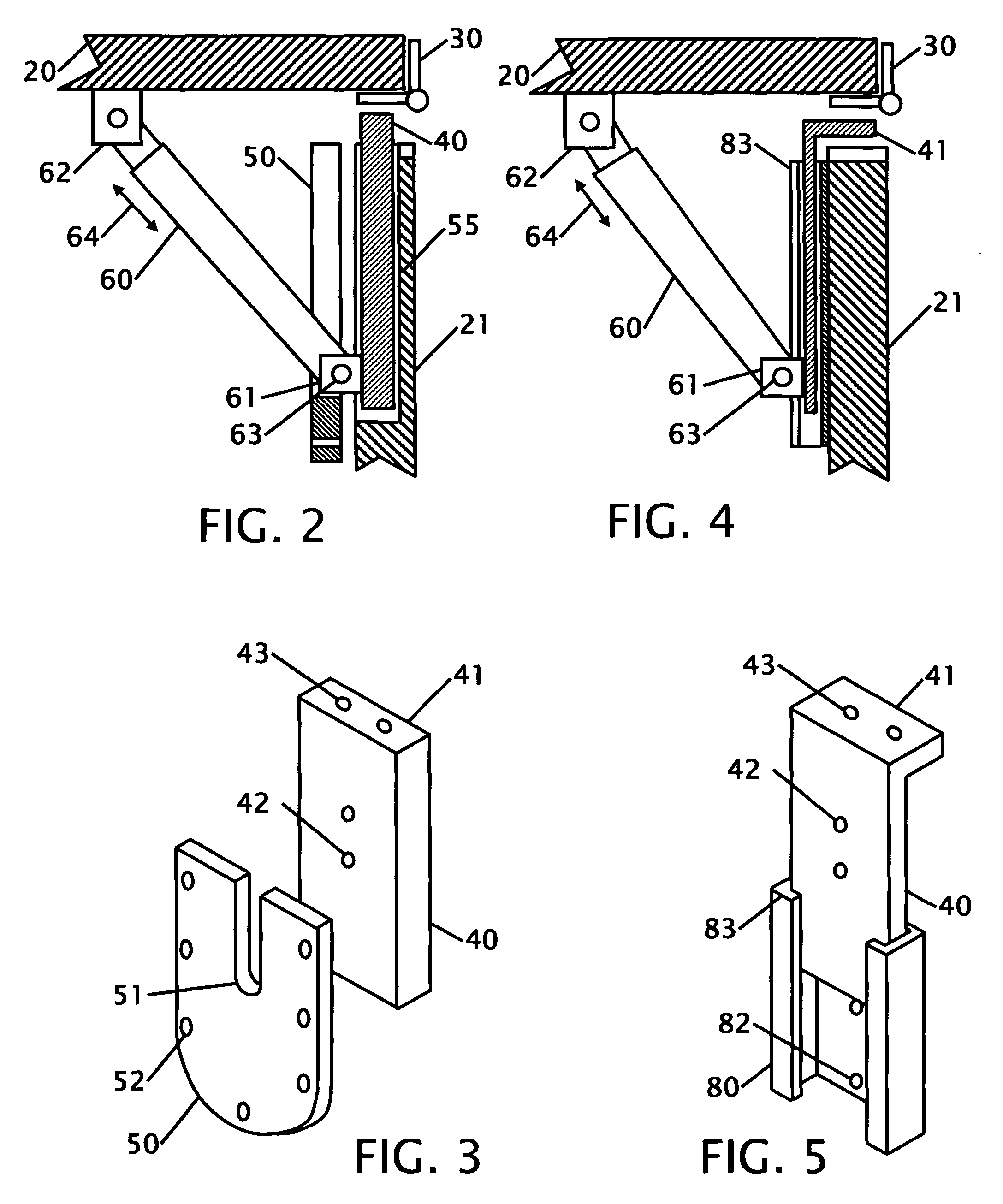Sliding safety hinge assembly for lid of box
a safety hinge and box lid technology, applied in the field of hinges, can solve the problems achieve the effects of not minimizing the weight of the lid or weight, eliminating the compounding force and the scissors effect of the hinge pivot point, and minimizing the resultant for
- Summary
- Abstract
- Description
- Claims
- Application Information
AI Technical Summary
Benefits of technology
Problems solved by technology
Method used
Image
Examples
Embodiment Construction
FIG. 1 shows an isometric view of the safety hinge in an exploded view on a chest. The chest 21 includes but is not limited to a toy box, hope chest, cedar chest, window seat or storage box. The overall device capable of including the hinge's pivotal functionality, as well as a counterbalance 60 to offset the weight of the lid. The major components include two pieces of metal forming a slide, a pivot mechanism such as a hinge 30 and if desirable a counter weighting mechanism 60 to offset the weight of the lid 20 for ease of opening. The hinge 30 is a traditional hinge formed from pined, pivotal or elastomeric hinge having two linked leafs. The slide would consist of a channel section that would inherently form the female member of the assembly that would retain the male sliding element. The female portion or slot 55 would be fastened or formed to the interior wall of the “box”21 and the male portion 40 would include the fastened hinge 30 and counter weight 60. In this figure a wide ...
PUM
 Login to View More
Login to View More Abstract
Description
Claims
Application Information
 Login to View More
Login to View More - R&D
- Intellectual Property
- Life Sciences
- Materials
- Tech Scout
- Unparalleled Data Quality
- Higher Quality Content
- 60% Fewer Hallucinations
Browse by: Latest US Patents, China's latest patents, Technical Efficacy Thesaurus, Application Domain, Technology Topic, Popular Technical Reports.
© 2025 PatSnap. All rights reserved.Legal|Privacy policy|Modern Slavery Act Transparency Statement|Sitemap|About US| Contact US: help@patsnap.com



